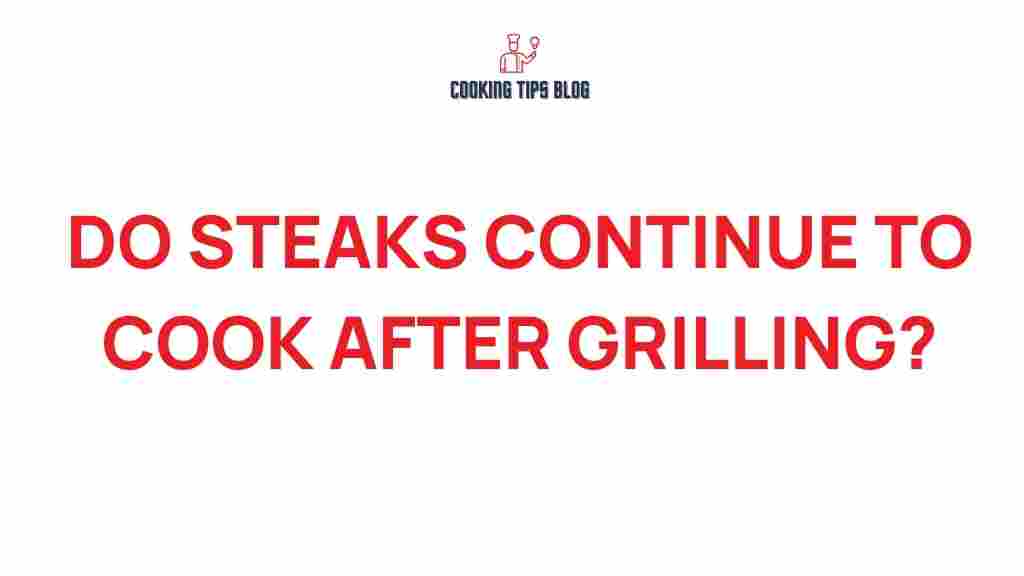Do Steaks Continue to Cook After Grilling? The Surprising Truth About Steak Cooking
Grilling a perfect steak is a culinary art that many strive to master. Whether you prefer it rare, medium, or well-done, understanding the science behind steak cooking can elevate your grilling game. One common question that often arises is: Do steaks continue to cook after grilling? This article will delve into the surprising truth behind this query, exploring why steaks can continue to cook even after they’ve been removed from the heat.
Understanding Steak Cooking
Before we can address whether steaks continue to cook after grilling, it’s essential to grasp the fundamentals of steak cooking. The cooking process involves transferring heat to the meat, which causes the proteins to denature and the fat to render. Here’s a closer look at the key factors:
- Temperature: The internal temperature of the steak plays a crucial role in determining doneness.
- Thickness: Thicker cuts of steak will retain heat longer than thinner cuts.
- Resting Time: Allowing the steak to rest after cooking can impact the final temperature.
Do Steaks Continue to Cook After Grilling?
The answer is a resounding yes! Steaks do continue to cook after being removed from the grill. This phenomenon is often referred to as “carryover cooking.” Here’s how it works:
- When a steak is grilled, the heat penetrates the outer layer and gradually moves towards the center.
- Even after the steak is taken off the grill, the heat retained in the outer layers continues to transfer towards the center.
- This can lead to an increase in internal temperature of 5 to 10 degrees Fahrenheit, depending on the thickness of the cut and the cooking method.
The Science Behind Carryover Cooking
To understand carryover cooking better, let’s break down the science involved:
- Heat Retention: Meat retains heat well due to its density and moisture content. As the outer layers of the steak cool down, they transfer their heat to the cooler interior.
- Thermal Conductivity: The rate at which heat moves through the steak affects how long it continues cooking post-grilling.
- Resting Period: The resting period allows the juices to redistribute, resulting in a more flavorful and juicy steak.
Step-by-Step: Perfecting Your Steak Cooking Technique
Now that you understand that steaks continue to cook after grilling, let’s explore how to achieve the perfect steak. Follow these steps for optimal results:
Step 1: Choose the Right Cut
Select a steak cut that suits your taste. Popular options include:
- Ribeye
- Filet Mignon
- Sirloin
- New York Strip
Step 2: Season Your Steak
Generously season your steak with salt and pepper. You can also use marinades or dry rubs for added flavor.
Step 3: Preheat Your Grill
Ensure your grill is preheated to a high temperature (around 450°F to 500°F). This helps achieve a good sear and crust.
Step 4: Grill Your Steak
Place the steak on the grill and cook it according to your desired doneness:
- Rare: 120°F to 125°F
- Medium Rare: 130°F to 135°F
- Medium: 140°F to 145°F
- Medium Well: 150°F to 155°F
- Well Done: 160°F and above
Step 5: Monitor the Temperature
Use a meat thermometer to check the internal temperature of the steak. Remember that the steak will continue to cook after being removed from the grill.
Step 6: Rest Your Steak
Allow your steak to rest for at least 5 to 10 minutes before slicing. This resting period is crucial for moisture retention and flavor enhancement.
Troubleshooting Common Steak Cooking Issues
Even the best cooks can encounter issues when grilling steak. Here are some common problems and tips to troubleshoot them:
Problem 1: Steak Is Overcooked
If your steak is overcooked, it might be due to:
- Not using a meat thermometer.
- Failure to account for carryover cooking.
Solution: Always monitor the internal temperature and plan for carryover cooking when determining when to take the steak off the grill.
Problem 2: Steak Is Tough
If your steak turns out tough, it may be because:
- You chose a lean cut without enough marbling.
- The steak was cooked at too high a temperature.
Solution: Opt for well-marbled cuts and cook them at a moderate temperature for tenderness.
Problem 3: Lack of Flavor
A steak lacking flavor can be disappointing. This might be caused by:
- Insufficient seasoning.
- Not resting the steak post-cooking.
Solution: Season generously and allow the steak to rest to enhance its flavor.
Final Thoughts on Steak Cooking
Understanding the nuances of steak cooking can significantly improve your grilling skills. Knowing that steaks continue to cook even after being removed from the grill is vital for achieving your desired doneness. By selecting the right cut, seasoning properly, and allowing for carryover cooking, you can serve up a perfectly cooked steak every time.
For more grilling tips and techniques, check out this comprehensive grilling guide. If you’re looking for quality steak recipes, don’t miss this popular recipe site.
Happy grilling!
This article is in the category Tools and created by Cookingtipsblog Team
